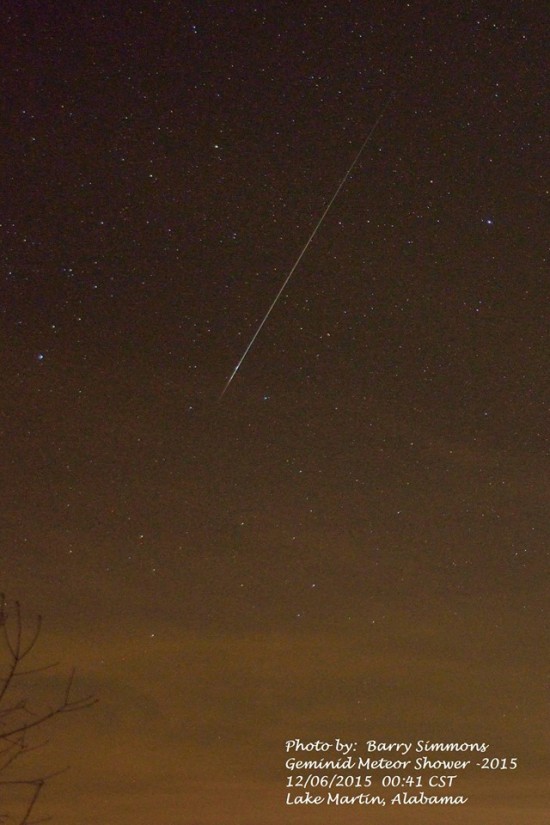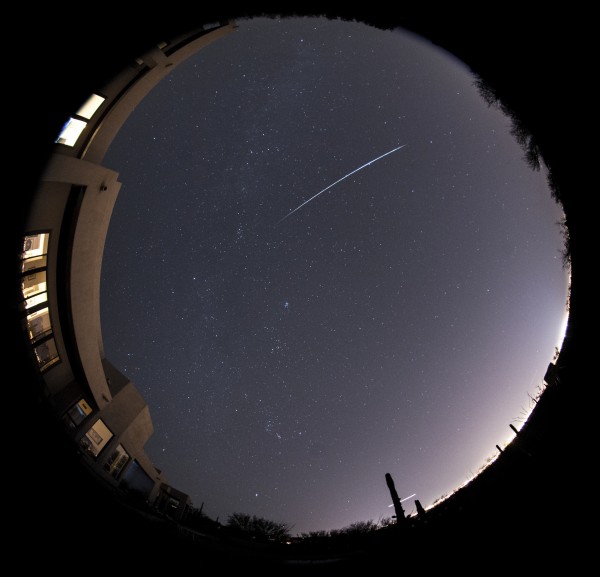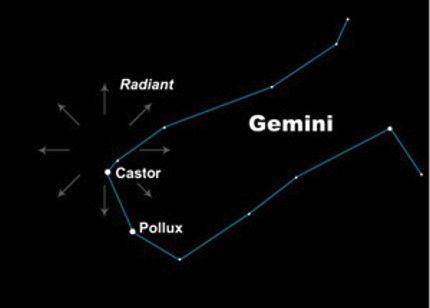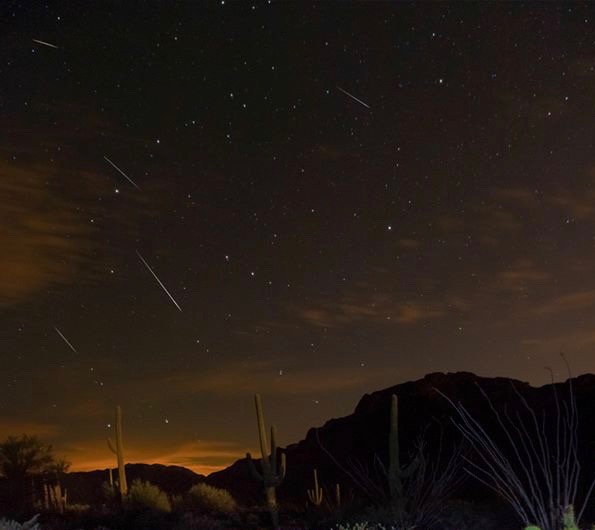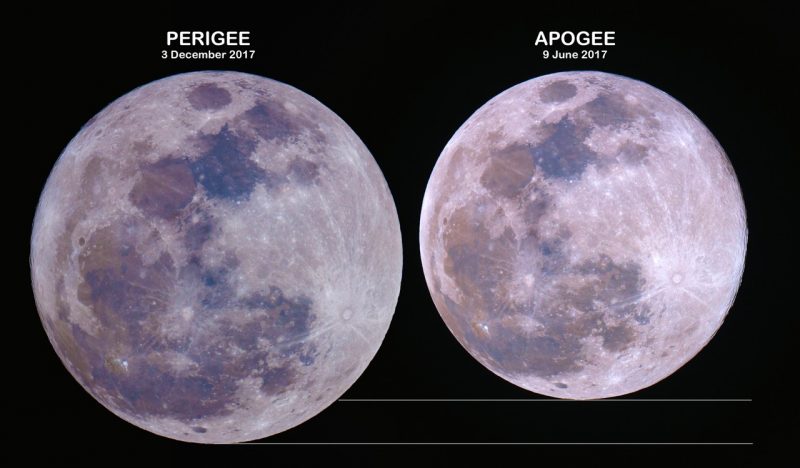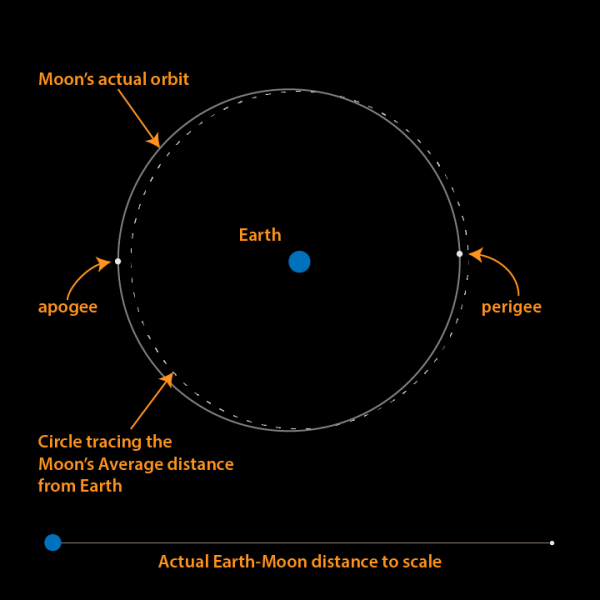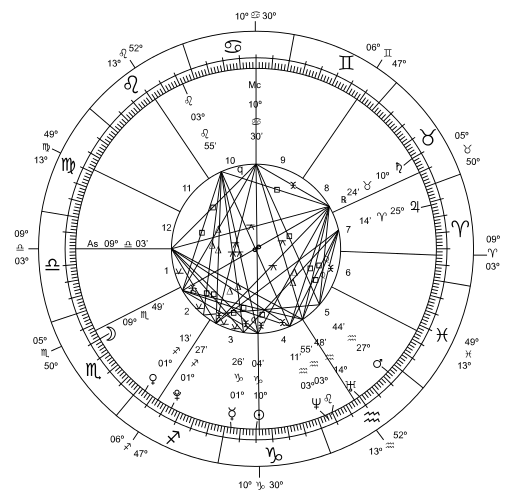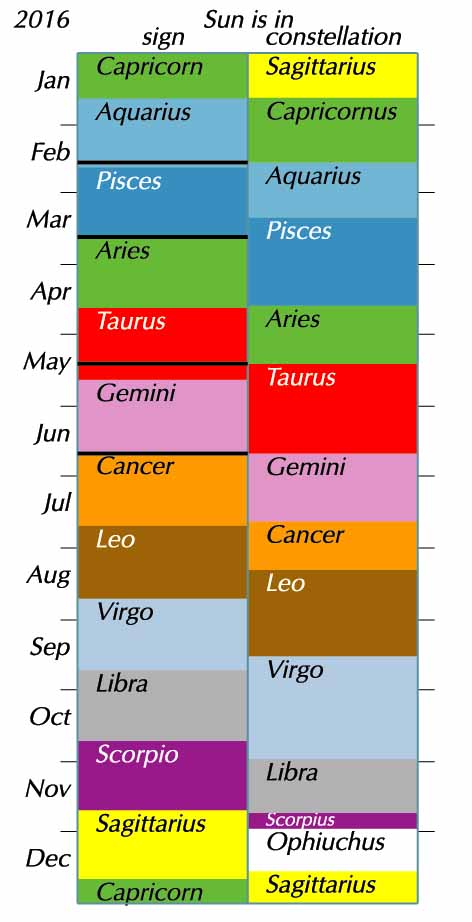
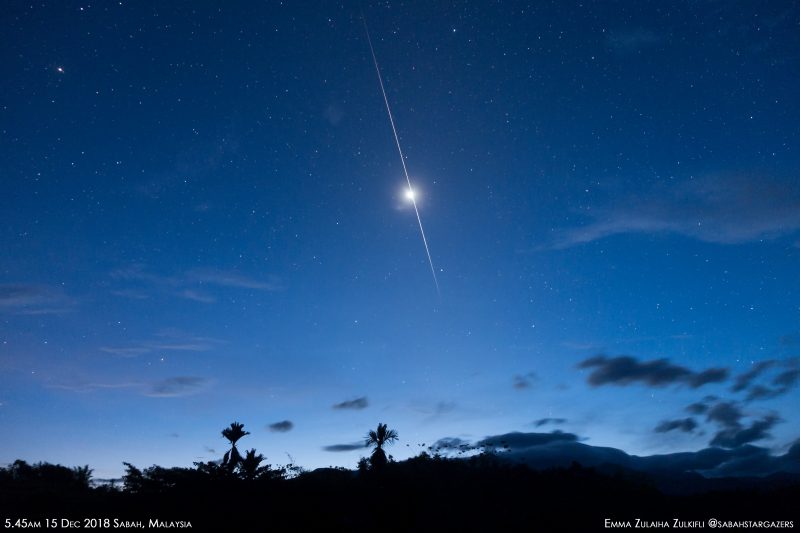
What are the odds?! This amazing image is from Emma Zulaiha Zulkifli in Sabah, on the island of Borneo in Malaysia. She caught a bright meteor streaking right in front of the bright planet Venus on December 15, 2018. She wrote: “Yes, the meteor actually did streak in front of Venus! Only a bit of tweaking on contrast and noise reduction done in Photoshop CC2018.” Fuji X-A1, 18-55mm f2.8 with Tripod, Exif : iso2000, 30″, f2.8. Way to go, Emma!
January 4, 2020 Quadrantids
April 22, 2020 Lyrids
May 5, 2020 Eta Aquariids
Late July, 2020 Delta Aquariids
August 12, 2020 Perseids
October 7, 2020 Draconids
October 21, 2020 Orionids
November 4-5, 2020 South Taurids
November 11-12, 2020 North Taurids
November 17, 2020 Leonids
December 13-14, 2020 Geminids
December 22, 2020 Ursids
A word about moonlight
Most important: a dark sky
Know your dates and times
Where to go to watch a meteor shower
What to bring with you
Are the predictions reliable?
Remember …
January 4, 2020, before dawn, the Quadrantids
The Quadrantids can produce over 100 meteors per hour, but the narrow peak of this shower lasts only a few hours and doesn’t always come at an opportune time. The radiant point is in the part of the sky that used to be considered the constellation Quadrans Muralis the Mural Quadrant. You’ll find this radiant near the famous Big Dipper asterism (chart here), in the north-northeastern sky after midnight and highest up before dawn. Because the radiant is fairly far to the north on the sky’s dome, meteor numbers tend to be greater at northerly latitudes in the Northern Hemisphere. In 2020, watch in the wee hours – after midnight and before dawn – on January 4. The moon is somewhat past first quarter phase, providing moon-free viewing in the predawn hours for 2020’s Quadrantid meteor shower.
Everything you need to know: Quadrantid meteor shower
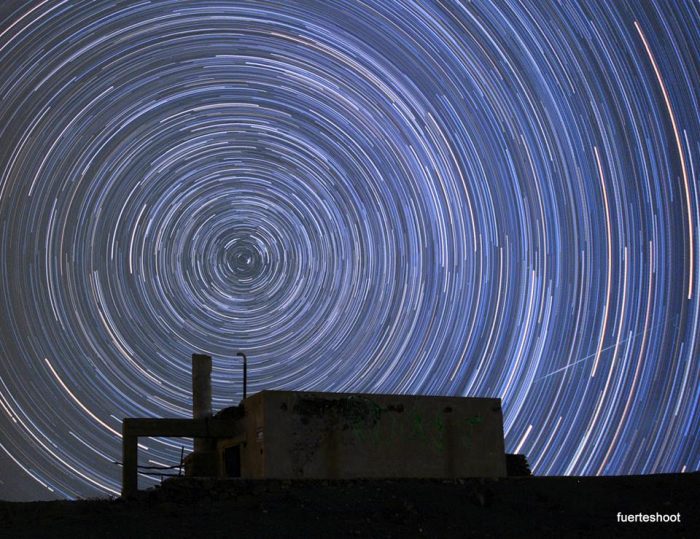
Lyrid meteor in 2014 by Simon Waldram in Fuerteventura in the Canary Islands. He discovered it as he finished batch editing 320 photos to make a startrail image.
April 22, 2020, before dawn, the Lyrids
The Lyrid meteor shower – April’s shooting stars – lasts from about April 16 to 25. About 10 to 15 meteors per hour can be expected around the shower’s peak, in a dark sky. The Lyrids are known for uncommon surges that can sometimes bring the rate up to 100 per hour. Those rare outbursts are not easy to predict, but they’re one of the reasons the tantalizing Lyrids are worth checking out. The radiant for this shower is near the bright star Vega in the constellation Lyra (chart here), which rises in the northeast at about 10 p.m. on April evenings. In 2020, we expect the peak viewing hours to take place in the dark hours before dawn April 22, with no moon to ruin the show.
Everything you need to know: Lyrid meteor shower

Long meteor caught during the peak of the May 2016 Eta Aquariid meteor shower, by Darla Young.
May 5, 2020, before dawn, the Eta Aquariids
This meteor shower has a relatively broad maximum; you can watch it the day before and after the predicted peak morning of May 5. Yet the nearly-full waxing gibbous moon is sure to dampen this year’s production. The shower favors the Southern Hemisphere and is often that hemisphere’s best meteor shower of the year. The radiant is near the star Eta in the constellation Aquarius the Water Bearer (click here for chart). The radiant comes over the eastern horizon at about 4 a.m. local time; that is the time at all locations across the globe. For that reason, you’ll want to watch this shower in the hour or two before dawn, no matter where you are on Earth. In the southern half of the U.S., 10 to 20 meteors per hour might be visible in a dark sky. Farther south – at latitudes in the Southern Hemisphere – you might see two to three times that number on a dark, moonless night. Meanwhile, at northerly latitudes – like those in the northern U.S. and Canada, or northern Europe – meteor numbers are lower for this shower. In 2020, the almost-full moon will be out nearly all night long, providing almost no dark sky for meteor watching. The most meteors will probably rain down in the predawn sky on May 5 – though in a moonlit sky! The broad peak to this shower means that some meteors may fly for a few days before and after the predicted optimal date.
Everything you need to know: Eta Aquariid meteor shower

Delta Aquariid in 2014, from David S. Brown in southwest Wyoming.
Late July 2020, before dawn, the Delta Aquariids
Like the Eta Aquariids in May, the Delta Aquariid meteor shower in July favors the Southern Hemisphere and tropical latitudes in the Northern Hemisphere. But these meteors can be seen from around the world. These faint meteors appear to radiate from near the star Skat or Delta in the constellation Aquarius the Water Bearer. The maximum hourly rate can reach 15 to 20 meteors in a dark sky. The nominal peak is around July 27-30, but, unlike many meteor showers, the Delta Aquariids lack a very definite peak. Instead, these medium-speed meteors ramble along fairly steadily throughout late July and early August. An hour or two before dawn usually presents the most favorable view of the Delta Aquariids. At the shower’s peak on or near July 28, 2020, the rather faint Delta Aquariid meteors will be best seen in the predawn hours, after the moon has set. You’ll still be seeing Eta Aquariids when the Perseids peak in August.
Everything you need to know: Delta Aquariid shower

The 2017 Perseid meteor shower peaked in moonlight, but that didn’t stop Hrvoje Crnjak in Šibenik, Croatia, from catching this bright Perseid on the morning of August 12, 2017. Notice the variations in brightness and color throughout, and the little “pop” of brightness toward the bottom. A brightness “pop” like that comes from a clump of vaporizing debris. Thank you, Hrvoje!
Late evening to dawn on August 11, 12 and 13, 2020, the Perseids
The Perseid meteor shower is perhaps the most beloved meteor shower of the year for the Northern Hemisphere. It’s a rich meteor shower, and it’s steady. These swift and bright meteors radiate from a point in the constellation Perseus the Hero. As with all meteor shower radiant points, you don’t need to know Perseus to watch the shower; instead, the meteors appear in all parts of the sky. These meteors frequently leave persistent trains. Perseid meteors tend to strengthen in number as late night deepens into midnight, and typically produce the most meteors in the wee hours before dawn. In 2020, the peak night of this shower will be somewhat marred by the last quarter moon, although the brighter Perseids will likely overcome the moonlit glare. Predicted peak in 2020: the night of August 11-12, but try the nights before and after, too, from late night until dawn.
All you need to Know: Perseid meteor shower
October 7, 2020, nightfall and evening, the Draconids
The radiant point for the Draconid meteor shower almost coincides with the head of the constellation Draco the Dragon in the northern sky. That’s why the Draconids are best viewed from the Northern Hemisphere. The Draconid shower is a real oddity, in that the radiant point stands highest in the sky as darkness falls. That means that, unlike many meteor showers, more Draconids are likely to fly in the evening hours than in the morning hours after midnight. This shower is usually a sleeper, producing only a handful of languid meteors per hour in most years. But watch out if the Dragon awakes! In rare instances, fiery Draco has been known to spew forth many hundreds of meteors in a single hour. In 2020, watch the Draconid meteors at nightfall and early evening on October 7. Try the nights of October 6 and 8, too. Fortunately, the waning gibbous moon won’t rise till late evening, providing moon-free viewing for several hours after nightfall.
All you need to know: Draconids in 2019
October 21, 2020, before dawn, the Orionids
On a dark, moonless night, the Orionids exhibit a maximum of about 10 to 20 meteors per hour. More meteors tend to fly after midnight, and the Orionids are typically at their best in the wee hours before dawn. These fast-moving meteors occasionally leave persistent trains. The Orionids sometimes produce bright fireballs, which can overcome some moonlight in years when the moon intrudes. If you trace these meteors backward, they seem to come from the Club of the famous constellation Orion the Hunter. In 2020, the waxing crescent moon sets in the evening, providing moon-free viewing for rest of the night. With no moon to ruin the show, try watching the Orionids in the wee hours before dawn on October 21 and 22.
Everything you need to know: Orionid meteor shower

In 2015, the Taurids put on a spectacular display of fireballs, which lasted many days. Photographer Jeff Dai captured this one over Yamdrok Lake in Tibet.
Late night November 4 until dawn November 5, 2020, the South Taurids
The meteoroid streams that feed the South (and North) Taurids are very spread out and diffuse. Thus the Taurids are extremely long-lasting (September 25 to November 25) but usually don’t offer more than about five meteors per hour. That is true even on their peak nights. The Taurids are, however, well known for having a high percentage of fireballs, or exceptionally bright meteors. Plus, the two Taurid showers – South and North – augment each other. In 2020, the expected peak night of the South Taurid shower happens when a waning gibbous moon lights up the sky almost all night long. Peak viewing is just after midnight, though under the glaring light of a bright waning gibbous moon. The South and North Taurid meteors continue to rain down throughout the following week, but with more interference from the waxing gibbous moon!
Late night November 11 until dawn November 12, 2020, the North Taurids
Like the South Taurids, the North Taurids meteor shower is long-lasting (October 12 – December 2) but modest, and the peak number is forecast at about five meteors per hour. The North and South Taurids combine to provide a nice sprinkling of meteors throughout October and November. Typically, you see the maximum numbers at around midnight, when Taurus the Bull is highest in the sky. Taurid meteors tend to be slow-moving, but sometimes very bright. In 2020, the slender waning crescent moon – rising in the wee hours before dawn – won’t seriously intrude on the peak night of November 11 (morning of November 12).
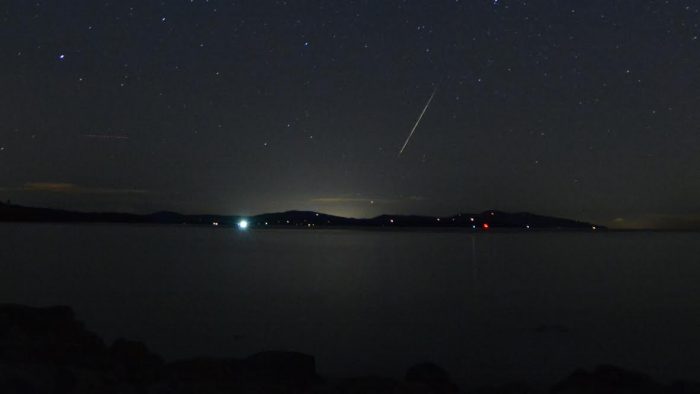
James Younger sent in this photo during the 2015 peak of the Leonid meteor shower. It’s a meteor over the San Juan Islands in the Pacific Northwest.
November 17, 2020, before dawn, the Leonids
Radiating from the constellation Leo the Lion, the famous Leonid meteor shower has produced some of the greatest meteor storms in history – at least one in living memory, 1966 – with rates as high as thousands of meteors per minute during a span of 15 minutes on the morning of November 17, 1966. Indeed, on that beautiful night in 1966, the meteors did, briefly, fall like rain. Some who witnessed the 1966 Leonid meteor storm said they felt as if they needed to grip the ground, so strong was the impression of Earth plowing along through space, fording the meteoroid stream. The meteors, after all, were all streaming from a single point in the sky – the radiant point – in this case in the constellation Leo the Lion. Leonid meteor storms sometimes recur in cycles of 33 to 34 years, but the Leonids around the turn of the century – while wonderful for many observers – did not match the shower of 1966. And, in most years, the Lion whimpers rather than roars, producing a maximum of perhaps 10-15 meteors per hour on a dark night. Like many meteor showers, the Leonids ordinarily pick up steam after midnight and display the greatest meteor numbers just before dawn, for all points on the globe. In 2020, the moon will display a waxing crescent phase, and set at early evening, to provide moon-free skies nearly all night long. The expected peak night is from late night November 16 till dawn November 17. The Leonids tend to produce the most meteors in the predawn hours, at which time the moon will be long gone.
Everything you need to know: Leonid meteor shower
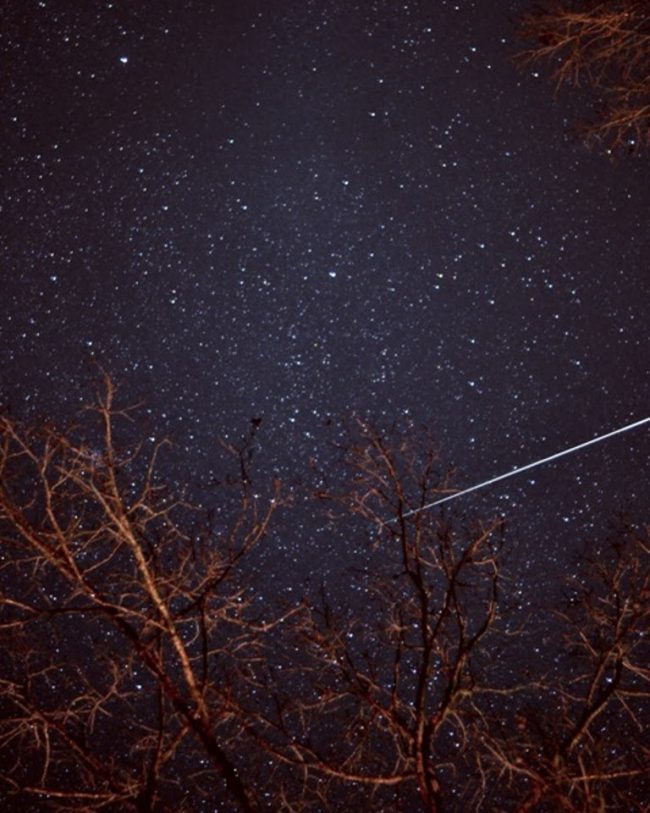
Cynthia Haithcock in Troy, North Carolina, caught this Geminid in 2015. Looks like a bright one!
December 13-14, 2020, mid-evening until dawn, Geminids
Radiating from near the bright stars Castor and Pollux in the constellation Gemini the Twins, the Geminid meteor shower is one of the finest meteors showers in the Northern Hemisphere (though still visible, at lower rates, in the Southern Hemisphere). The meteors are plentiful, rivaling the August Perseids. They are often bold, white and bright. On a dark night, you can often catch 50 or more meteors per hour. The greatest number of meteors fall in the wee hours after midnight, centered around 2 a.m. local time (the time on your clock no matter where you are on Earth), when the radiant point is highest in the sky. In 2020, the peak of the shower almost coincides with new moon, providing dark skies all night long. Watch the usually reliable and prolific Geminid meteor shower from mid-evening December 13 until dawn December 14, with absolutely no moonlight to ruin the show.
Everything you need to know: Geminid meteor shower
December 22, 2020, before dawn, the Ursids
Die-hard meteor watchers in the Northern Hemisphere watch for Ursid meteors about a week after the Geminids. This low-key meteor shower is active each year from about December 17 to 26. The Ursids usually peak around the December solstice, perhaps offering 5 to 10 meteors per hour during the predawn hours in a dark sky. This year, in 2020, the first quarter moon will set in the evening, providing dark skies at late night and the morning hours.
Ursid meteors peak around December solstice
A word about moonlight. In 2020, moonlight poses no problem for the April Lyrids, November Leonids and December Geminids. The moon won’t seriously interfere with the October Draconids, October Orionids or November North Taurids. Some moon-free viewing time accompanies the January Quadrantids and July Delta Aquariids in the predawn sky, and the August Perseids in the evening sky. On the other hand, a nearly full moon obstructs the May Eta Aquariids, while a bright waning gibbous moon obstructs the November South Taurids. Our almanac page provides links for access to the moonrise and moonset times in your sky.
Most important: a dark sky. Here’s the first thing – the main thing – you need to know to become as proficient as the experts at watching meteors. That is, to watch meteors, you need a dark sky. It’s possible to catch a meteor or two or even more from the suburbs. But, to experience a true meteor shower – where you might see several meteors each minute – avoid city lights. EarthSky’s Stargazing page shows dark locations worldwide.
Know your dates and times. You also need to be looking on the right date, at the right time of night. Meteor showers occur over a range of dates, because they stem from Earth’s own movement through space. As we orbit the sun, we cross “meteor streams.” These streams of icy particles in space come from comets moving in orbit around the sun. Comets are fragile, icy bodies that litter their orbits with debris. When this cometary debris enters our atmosphere, it vaporizes due to friction with the air. If moonlight or city lights don’t obscure the view, we on Earth see the falling, vaporizing particles as meteors.
Where to go to watch a meteor shower. You can comfortably watch meteors from many places, assuming you have a dark sky: a rural back yard or deck, the hood of your car, the side of a road. State parks and national parks are good bets, but be sure they have a wide open viewing area, like a field; you don’t want to be stuck in the midst of a forest on meteor night. An EarthSky friend, veteran meteor-watcher and astrophotographer Sergio Garcia Rill, also offers this specific advice:
… you might want to give it a try but don’t know where to go. Well, in planning my night photoshoots I use a variety of apps and web pages to know how dark the sky is in a certain location, the weather forecast, and how the night sky will look.
Some suggested apps and websites:
EarthSky’s Best Places to Stargaze
https://earthsky.org/stargazing
Find a Dark Sky Place, from the International Dark Sky Association
https://www.darksky.org/our-work/conservation/idsp/finder/
Heavens-Above: Satellite predictions customized to your location
https://www.heavens-above.com
Stellarium Online: Star maps customized to your location
https://stellarium-web.org
Accuweather’s astronomy blog
https://www.accuweather.com/en/weather-blogs/astronomy
Dark Site Finder, from astrophotographer Kevin Palmer
https://darksitefinder.com/map/
Blue Marble Navigator
https://blue-marble.de/nightlights/2019
What to bring with you. You don’t need special equipment to watch a meteor shower. If you want to bring along equipment to make yourself more comfortable, consider a blanket or reclining lawn chair, a thermos with a hot drink, binoculars for gazing at the stars. Be sure to dress warmly enough, even in spring or summer, especially in the hours before dawn. Binoculars are fun to have. You won’t need them for watching the meteor shower, but, especially if you have a dark sky, you might not be able to resist pointing them at the starry sky.
Are the predictions reliable? Although astronomers have tried to publish exact predictions in recent years, meteor showers remain notoriously unpredictable. Your best bet is to go outside at the times we suggest, and plan to spend at least an hour, if not a whole night, reclining comfortably while looking up at the sky. Also remember that meteor showers typically don’t just happen on one night. They span a range of dates. So the morning before or after a shower’s peak might be good, too.
Remember … meteor showers are like fishing. You go, you enjoy nature … and sometimes you catch something.
Peak dates are derived from data published in the Observer’s Handbook by the Royal Astronomical Society of Canada and Guy Ottewell’s Astronomical Calendar.
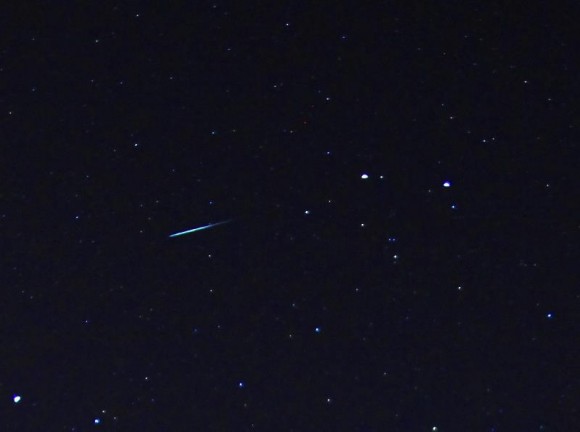
This Geminid meteor is seen coming straight from its radiant point, which is near the two brightest stars in Gemini, Castor and Pollux. Photo taken on the night of December 12-13, 2012, by EarthSky Facebook friend Mike O’Neal in Oklahoma. He said the 2012 Geminid meteor shower was one of the best meteor shows he’s ever seen.
Bottom line: Look here for information about all the major meteor showers between now and the year’s end. There are some good ones!
Find a dark place to observe meteor showers from worldwide.
EarthSky’s top 10 tips for meteor-watchers
Enjoy knowing where to look in the night sky? Please donate to help EarthSky keep going.
from EarthSky https://ift.tt/2FdJAzd


What are the odds?! This amazing image is from Emma Zulaiha Zulkifli in Sabah, on the island of Borneo in Malaysia. She caught a bright meteor streaking right in front of the bright planet Venus on December 15, 2018. She wrote: “Yes, the meteor actually did streak in front of Venus! Only a bit of tweaking on contrast and noise reduction done in Photoshop CC2018.” Fuji X-A1, 18-55mm f2.8 with Tripod, Exif : iso2000, 30″, f2.8. Way to go, Emma!
January 4, 2020 Quadrantids
April 22, 2020 Lyrids
May 5, 2020 Eta Aquariids
Late July, 2020 Delta Aquariids
August 12, 2020 Perseids
October 7, 2020 Draconids
October 21, 2020 Orionids
November 4-5, 2020 South Taurids
November 11-12, 2020 North Taurids
November 17, 2020 Leonids
December 13-14, 2020 Geminids
December 22, 2020 Ursids
A word about moonlight
Most important: a dark sky
Know your dates and times
Where to go to watch a meteor shower
What to bring with you
Are the predictions reliable?
Remember …
January 4, 2020, before dawn, the Quadrantids
The Quadrantids can produce over 100 meteors per hour, but the narrow peak of this shower lasts only a few hours and doesn’t always come at an opportune time. The radiant point is in the part of the sky that used to be considered the constellation Quadrans Muralis the Mural Quadrant. You’ll find this radiant near the famous Big Dipper asterism (chart here), in the north-northeastern sky after midnight and highest up before dawn. Because the radiant is fairly far to the north on the sky’s dome, meteor numbers tend to be greater at northerly latitudes in the Northern Hemisphere. In 2020, watch in the wee hours – after midnight and before dawn – on January 4. The moon is somewhat past first quarter phase, providing moon-free viewing in the predawn hours for 2020’s Quadrantid meteor shower.
Everything you need to know: Quadrantid meteor shower

Lyrid meteor in 2014 by Simon Waldram in Fuerteventura in the Canary Islands. He discovered it as he finished batch editing 320 photos to make a startrail image.
April 22, 2020, before dawn, the Lyrids
The Lyrid meteor shower – April’s shooting stars – lasts from about April 16 to 25. About 10 to 15 meteors per hour can be expected around the shower’s peak, in a dark sky. The Lyrids are known for uncommon surges that can sometimes bring the rate up to 100 per hour. Those rare outbursts are not easy to predict, but they’re one of the reasons the tantalizing Lyrids are worth checking out. The radiant for this shower is near the bright star Vega in the constellation Lyra (chart here), which rises in the northeast at about 10 p.m. on April evenings. In 2020, we expect the peak viewing hours to take place in the dark hours before dawn April 22, with no moon to ruin the show.
Everything you need to know: Lyrid meteor shower

Long meteor caught during the peak of the May 2016 Eta Aquariid meteor shower, by Darla Young.
May 5, 2020, before dawn, the Eta Aquariids
This meteor shower has a relatively broad maximum; you can watch it the day before and after the predicted peak morning of May 5. Yet the nearly-full waxing gibbous moon is sure to dampen this year’s production. The shower favors the Southern Hemisphere and is often that hemisphere’s best meteor shower of the year. The radiant is near the star Eta in the constellation Aquarius the Water Bearer (click here for chart). The radiant comes over the eastern horizon at about 4 a.m. local time; that is the time at all locations across the globe. For that reason, you’ll want to watch this shower in the hour or two before dawn, no matter where you are on Earth. In the southern half of the U.S., 10 to 20 meteors per hour might be visible in a dark sky. Farther south – at latitudes in the Southern Hemisphere – you might see two to three times that number on a dark, moonless night. Meanwhile, at northerly latitudes – like those in the northern U.S. and Canada, or northern Europe – meteor numbers are lower for this shower. In 2020, the almost-full moon will be out nearly all night long, providing almost no dark sky for meteor watching. The most meteors will probably rain down in the predawn sky on May 5 – though in a moonlit sky! The broad peak to this shower means that some meteors may fly for a few days before and after the predicted optimal date.
Everything you need to know: Eta Aquariid meteor shower

Delta Aquariid in 2014, from David S. Brown in southwest Wyoming.
Late July 2020, before dawn, the Delta Aquariids
Like the Eta Aquariids in May, the Delta Aquariid meteor shower in July favors the Southern Hemisphere and tropical latitudes in the Northern Hemisphere. But these meteors can be seen from around the world. These faint meteors appear to radiate from near the star Skat or Delta in the constellation Aquarius the Water Bearer. The maximum hourly rate can reach 15 to 20 meteors in a dark sky. The nominal peak is around July 27-30, but, unlike many meteor showers, the Delta Aquariids lack a very definite peak. Instead, these medium-speed meteors ramble along fairly steadily throughout late July and early August. An hour or two before dawn usually presents the most favorable view of the Delta Aquariids. At the shower’s peak on or near July 28, 2020, the rather faint Delta Aquariid meteors will be best seen in the predawn hours, after the moon has set. You’ll still be seeing Eta Aquariids when the Perseids peak in August.
Everything you need to know: Delta Aquariid shower

The 2017 Perseid meteor shower peaked in moonlight, but that didn’t stop Hrvoje Crnjak in Šibenik, Croatia, from catching this bright Perseid on the morning of August 12, 2017. Notice the variations in brightness and color throughout, and the little “pop” of brightness toward the bottom. A brightness “pop” like that comes from a clump of vaporizing debris. Thank you, Hrvoje!
Late evening to dawn on August 11, 12 and 13, 2020, the Perseids
The Perseid meteor shower is perhaps the most beloved meteor shower of the year for the Northern Hemisphere. It’s a rich meteor shower, and it’s steady. These swift and bright meteors radiate from a point in the constellation Perseus the Hero. As with all meteor shower radiant points, you don’t need to know Perseus to watch the shower; instead, the meteors appear in all parts of the sky. These meteors frequently leave persistent trains. Perseid meteors tend to strengthen in number as late night deepens into midnight, and typically produce the most meteors in the wee hours before dawn. In 2020, the peak night of this shower will be somewhat marred by the last quarter moon, although the brighter Perseids will likely overcome the moonlit glare. Predicted peak in 2020: the night of August 11-12, but try the nights before and after, too, from late night until dawn.
All you need to Know: Perseid meteor shower
October 7, 2020, nightfall and evening, the Draconids
The radiant point for the Draconid meteor shower almost coincides with the head of the constellation Draco the Dragon in the northern sky. That’s why the Draconids are best viewed from the Northern Hemisphere. The Draconid shower is a real oddity, in that the radiant point stands highest in the sky as darkness falls. That means that, unlike many meteor showers, more Draconids are likely to fly in the evening hours than in the morning hours after midnight. This shower is usually a sleeper, producing only a handful of languid meteors per hour in most years. But watch out if the Dragon awakes! In rare instances, fiery Draco has been known to spew forth many hundreds of meteors in a single hour. In 2020, watch the Draconid meteors at nightfall and early evening on October 7. Try the nights of October 6 and 8, too. Fortunately, the waning gibbous moon won’t rise till late evening, providing moon-free viewing for several hours after nightfall.
All you need to know: Draconids in 2019
October 21, 2020, before dawn, the Orionids
On a dark, moonless night, the Orionids exhibit a maximum of about 10 to 20 meteors per hour. More meteors tend to fly after midnight, and the Orionids are typically at their best in the wee hours before dawn. These fast-moving meteors occasionally leave persistent trains. The Orionids sometimes produce bright fireballs, which can overcome some moonlight in years when the moon intrudes. If you trace these meteors backward, they seem to come from the Club of the famous constellation Orion the Hunter. In 2020, the waxing crescent moon sets in the evening, providing moon-free viewing for rest of the night. With no moon to ruin the show, try watching the Orionids in the wee hours before dawn on October 21 and 22.
Everything you need to know: Orionid meteor shower

In 2015, the Taurids put on a spectacular display of fireballs, which lasted many days. Photographer Jeff Dai captured this one over Yamdrok Lake in Tibet.
Late night November 4 until dawn November 5, 2020, the South Taurids
The meteoroid streams that feed the South (and North) Taurids are very spread out and diffuse. Thus the Taurids are extremely long-lasting (September 25 to November 25) but usually don’t offer more than about five meteors per hour. That is true even on their peak nights. The Taurids are, however, well known for having a high percentage of fireballs, or exceptionally bright meteors. Plus, the two Taurid showers – South and North – augment each other. In 2020, the expected peak night of the South Taurid shower happens when a waning gibbous moon lights up the sky almost all night long. Peak viewing is just after midnight, though under the glaring light of a bright waning gibbous moon. The South and North Taurid meteors continue to rain down throughout the following week, but with more interference from the waxing gibbous moon!
Late night November 11 until dawn November 12, 2020, the North Taurids
Like the South Taurids, the North Taurids meteor shower is long-lasting (October 12 – December 2) but modest, and the peak number is forecast at about five meteors per hour. The North and South Taurids combine to provide a nice sprinkling of meteors throughout October and November. Typically, you see the maximum numbers at around midnight, when Taurus the Bull is highest in the sky. Taurid meteors tend to be slow-moving, but sometimes very bright. In 2020, the slender waning crescent moon – rising in the wee hours before dawn – won’t seriously intrude on the peak night of November 11 (morning of November 12).

James Younger sent in this photo during the 2015 peak of the Leonid meteor shower. It’s a meteor over the San Juan Islands in the Pacific Northwest.
November 17, 2020, before dawn, the Leonids
Radiating from the constellation Leo the Lion, the famous Leonid meteor shower has produced some of the greatest meteor storms in history – at least one in living memory, 1966 – with rates as high as thousands of meteors per minute during a span of 15 minutes on the morning of November 17, 1966. Indeed, on that beautiful night in 1966, the meteors did, briefly, fall like rain. Some who witnessed the 1966 Leonid meteor storm said they felt as if they needed to grip the ground, so strong was the impression of Earth plowing along through space, fording the meteoroid stream. The meteors, after all, were all streaming from a single point in the sky – the radiant point – in this case in the constellation Leo the Lion. Leonid meteor storms sometimes recur in cycles of 33 to 34 years, but the Leonids around the turn of the century – while wonderful for many observers – did not match the shower of 1966. And, in most years, the Lion whimpers rather than roars, producing a maximum of perhaps 10-15 meteors per hour on a dark night. Like many meteor showers, the Leonids ordinarily pick up steam after midnight and display the greatest meteor numbers just before dawn, for all points on the globe. In 2020, the moon will display a waxing crescent phase, and set at early evening, to provide moon-free skies nearly all night long. The expected peak night is from late night November 16 till dawn November 17. The Leonids tend to produce the most meteors in the predawn hours, at which time the moon will be long gone.
Everything you need to know: Leonid meteor shower

Cynthia Haithcock in Troy, North Carolina, caught this Geminid in 2015. Looks like a bright one!
December 13-14, 2020, mid-evening until dawn, Geminids
Radiating from near the bright stars Castor and Pollux in the constellation Gemini the Twins, the Geminid meteor shower is one of the finest meteors showers in the Northern Hemisphere (though still visible, at lower rates, in the Southern Hemisphere). The meteors are plentiful, rivaling the August Perseids. They are often bold, white and bright. On a dark night, you can often catch 50 or more meteors per hour. The greatest number of meteors fall in the wee hours after midnight, centered around 2 a.m. local time (the time on your clock no matter where you are on Earth), when the radiant point is highest in the sky. In 2020, the peak of the shower almost coincides with new moon, providing dark skies all night long. Watch the usually reliable and prolific Geminid meteor shower from mid-evening December 13 until dawn December 14, with absolutely no moonlight to ruin the show.
Everything you need to know: Geminid meteor shower
December 22, 2020, before dawn, the Ursids
Die-hard meteor watchers in the Northern Hemisphere watch for Ursid meteors about a week after the Geminids. This low-key meteor shower is active each year from about December 17 to 26. The Ursids usually peak around the December solstice, perhaps offering 5 to 10 meteors per hour during the predawn hours in a dark sky. This year, in 2020, the first quarter moon will set in the evening, providing dark skies at late night and the morning hours.
Ursid meteors peak around December solstice
A word about moonlight. In 2020, moonlight poses no problem for the April Lyrids, November Leonids and December Geminids. The moon won’t seriously interfere with the October Draconids, October Orionids or November North Taurids. Some moon-free viewing time accompanies the January Quadrantids and July Delta Aquariids in the predawn sky, and the August Perseids in the evening sky. On the other hand, a nearly full moon obstructs the May Eta Aquariids, while a bright waning gibbous moon obstructs the November South Taurids. Our almanac page provides links for access to the moonrise and moonset times in your sky.
Most important: a dark sky. Here’s the first thing – the main thing – you need to know to become as proficient as the experts at watching meteors. That is, to watch meteors, you need a dark sky. It’s possible to catch a meteor or two or even more from the suburbs. But, to experience a true meteor shower – where you might see several meteors each minute – avoid city lights. EarthSky’s Stargazing page shows dark locations worldwide.
Know your dates and times. You also need to be looking on the right date, at the right time of night. Meteor showers occur over a range of dates, because they stem from Earth’s own movement through space. As we orbit the sun, we cross “meteor streams.” These streams of icy particles in space come from comets moving in orbit around the sun. Comets are fragile, icy bodies that litter their orbits with debris. When this cometary debris enters our atmosphere, it vaporizes due to friction with the air. If moonlight or city lights don’t obscure the view, we on Earth see the falling, vaporizing particles as meteors.
Where to go to watch a meteor shower. You can comfortably watch meteors from many places, assuming you have a dark sky: a rural back yard or deck, the hood of your car, the side of a road. State parks and national parks are good bets, but be sure they have a wide open viewing area, like a field; you don’t want to be stuck in the midst of a forest on meteor night. An EarthSky friend, veteran meteor-watcher and astrophotographer Sergio Garcia Rill, also offers this specific advice:
… you might want to give it a try but don’t know where to go. Well, in planning my night photoshoots I use a variety of apps and web pages to know how dark the sky is in a certain location, the weather forecast, and how the night sky will look.
Some suggested apps and websites:
EarthSky’s Best Places to Stargaze
https://earthsky.org/stargazing
Find a Dark Sky Place, from the International Dark Sky Association
https://www.darksky.org/our-work/conservation/idsp/finder/
Heavens-Above: Satellite predictions customized to your location
https://www.heavens-above.com
Stellarium Online: Star maps customized to your location
https://stellarium-web.org
Accuweather’s astronomy blog
https://www.accuweather.com/en/weather-blogs/astronomy
Dark Site Finder, from astrophotographer Kevin Palmer
https://darksitefinder.com/map/
Blue Marble Navigator
https://blue-marble.de/nightlights/2019
What to bring with you. You don’t need special equipment to watch a meteor shower. If you want to bring along equipment to make yourself more comfortable, consider a blanket or reclining lawn chair, a thermos with a hot drink, binoculars for gazing at the stars. Be sure to dress warmly enough, even in spring or summer, especially in the hours before dawn. Binoculars are fun to have. You won’t need them for watching the meteor shower, but, especially if you have a dark sky, you might not be able to resist pointing them at the starry sky.
Are the predictions reliable? Although astronomers have tried to publish exact predictions in recent years, meteor showers remain notoriously unpredictable. Your best bet is to go outside at the times we suggest, and plan to spend at least an hour, if not a whole night, reclining comfortably while looking up at the sky. Also remember that meteor showers typically don’t just happen on one night. They span a range of dates. So the morning before or after a shower’s peak might be good, too.
Remember … meteor showers are like fishing. You go, you enjoy nature … and sometimes you catch something.
Peak dates are derived from data published in the Observer’s Handbook by the Royal Astronomical Society of Canada and Guy Ottewell’s Astronomical Calendar.

This Geminid meteor is seen coming straight from its radiant point, which is near the two brightest stars in Gemini, Castor and Pollux. Photo taken on the night of December 12-13, 2012, by EarthSky Facebook friend Mike O’Neal in Oklahoma. He said the 2012 Geminid meteor shower was one of the best meteor shows he’s ever seen.
Bottom line: Look here for information about all the major meteor showers between now and the year’s end. There are some good ones!
Find a dark place to observe meteor showers from worldwide.
EarthSky’s top 10 tips for meteor-watchers
Enjoy knowing where to look in the night sky? Please donate to help EarthSky keep going.
from EarthSky https://ift.tt/2FdJAzd


